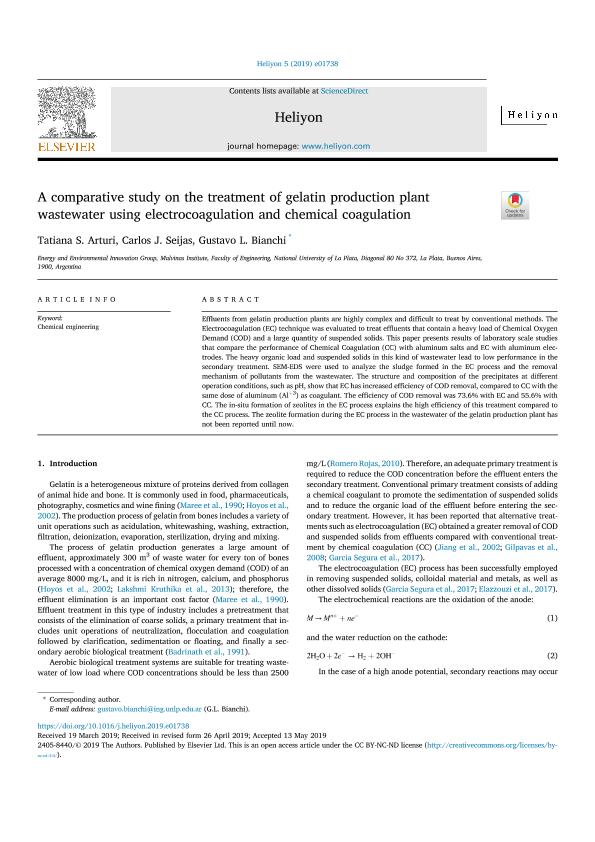Artículo
A comparative study on the treatment of gelatin production plant wastewater using electrocoagulation and chemical coagulation
Fecha de publicación:
05/2019
Editorial:
Elsevier
Revista:
Heliyon
ISSN:
2405-8440
Idioma:
Inglés
Tipo de recurso:
Artículo publicado
Clasificación temática:
Resumen
Effluents from gelatin production plants are highly complex and difficult to treat by conventional methods. The Electrocoagulation (EC) technique was evaluated to treat effluents that contain a heavy load of Chemical Oxygen Demand (COD) and a large quantity of suspended solids. This paper presents results of laboratory scale studies that compare the performance of Chemical Coagulation (CC) with aluminum salts and EC with aluminum electrodes. The heavy organic load and suspended solids in this kind of wastewater lead to low performance in the secondary treatment. SEM-EDS were used to analyze the sludge formed in the EC process and the removal mechanism of pollutants from the wastewater. The structure and composition of the precipitates at different operation conditions, such as pH, show that EC has increased efficiency of COD removal, compared to CC with the same dose of aluminum (Al+3) as coagulant. The efficiency of COD removal was 73.6% with EC and 55.6% with CC. The in-situ formation of zeolites in the EC process explains the high efficiency of this treatment compared to the CC process. The zeolite formation during the EC process in the wastewater of the gelatin production plant has not been reported until now.
Palabras clave:
ELECTROCOAGULACIÓN
,
COAGULACIÓN QUÍMICA
Archivos asociados
Licencia
Identificadores
Colecciones
Articulos(CCT - LA PLATA)
Articulos de CTRO.CIENTIFICO TECNOL.CONICET - LA PLATA
Articulos de CTRO.CIENTIFICO TECNOL.CONICET - LA PLATA
Citación
Arturi, Tatiana Sonia; Seijas, Carlos J.; Bianchi, Gustavo Luis; A comparative study on the treatment of gelatin production plant wastewater using electrocoagulation and chemical coagulation; Elsevier; Heliyon; 5; 5; 5-2019; 1-7; e01738
Compartir
Altmétricas




